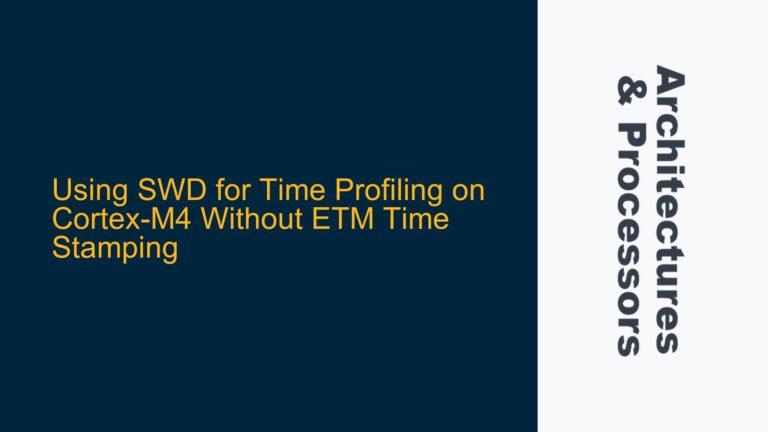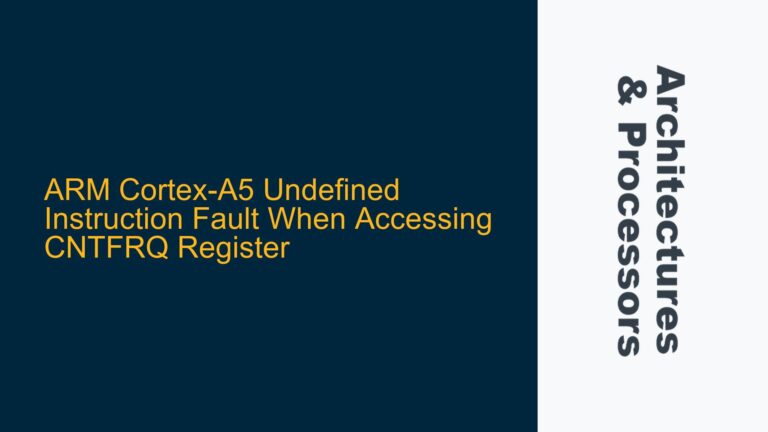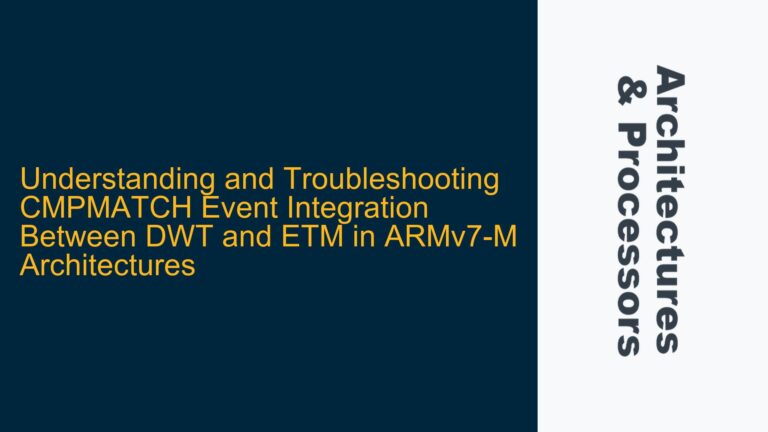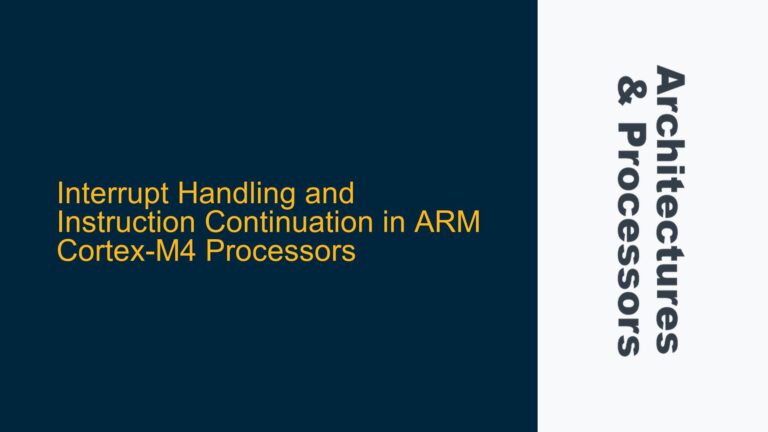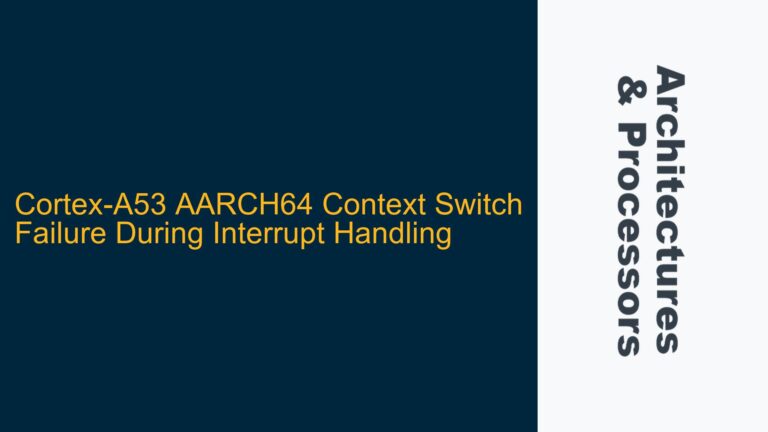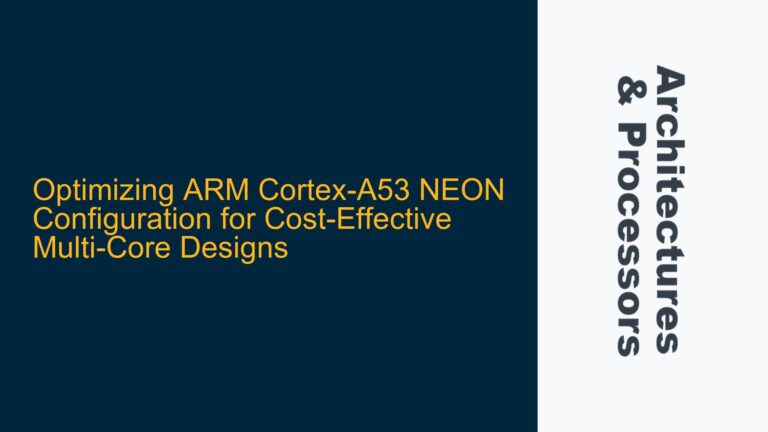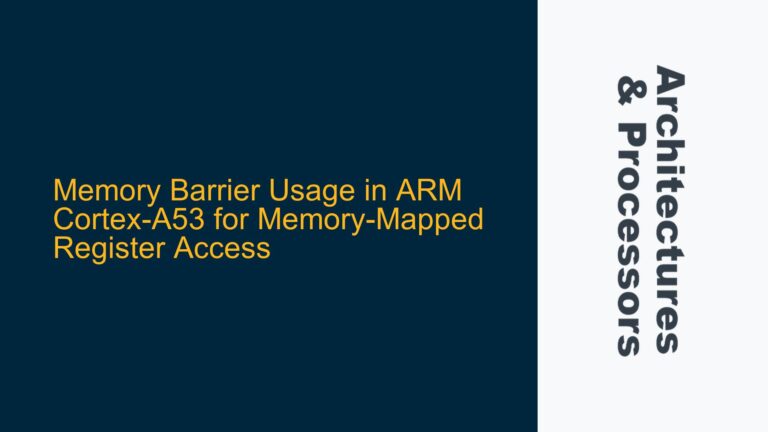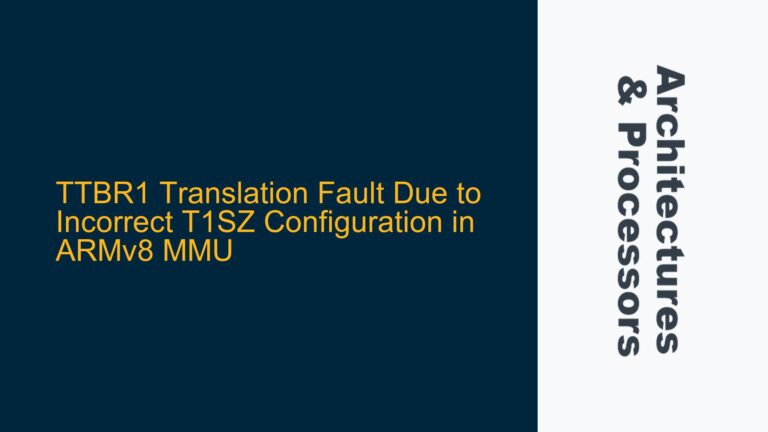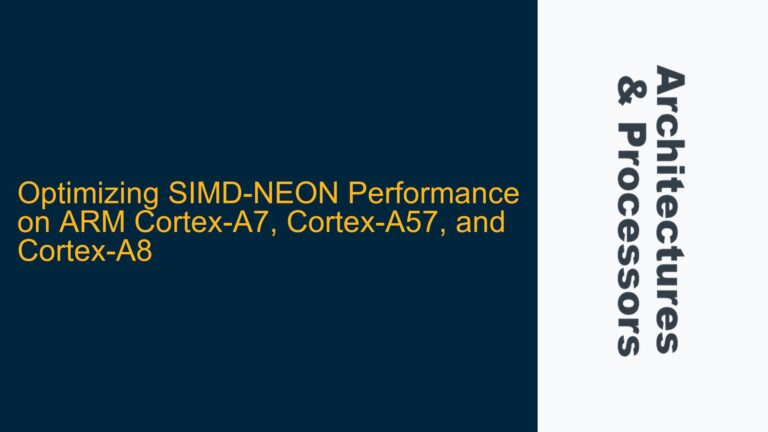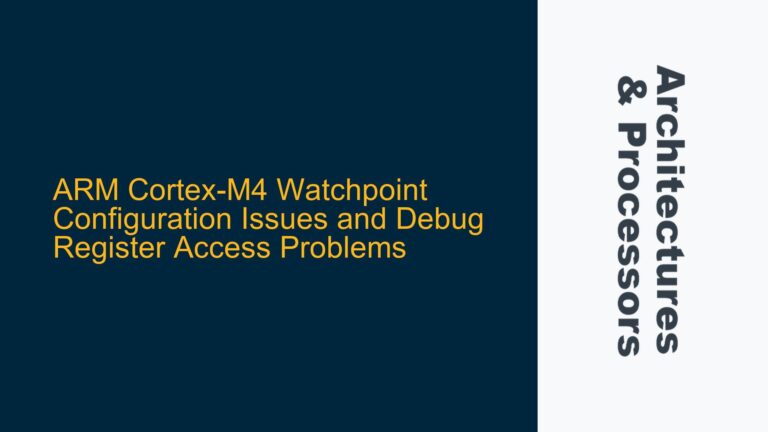Using SWD for Time Profiling on Cortex-M4 Without ETM Time Stamping
ARM Cortex-M4 Time Profiling Challenges Without ETM Support The ARM Cortex-M4 microcontroller, such as the LPC4370, is widely used in real-time applications due to its balance of performance and power efficiency. However, one of the challenges developers face is accurately measuring the execution time of specific functions, especially when the microcontroller lacks Embedded Trace Macrocell…
